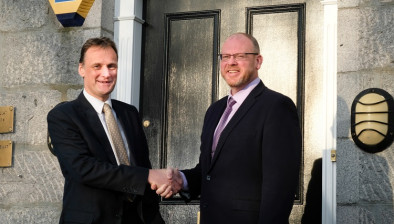Scottish corporate insolvencies record 28% yearly rise in Q2

Iain Fraser
New data from the Accountant in Bankruptcy (AiB) has shown an increase in both corporate and personal insolvencies.
Corporate insolvencies rose to 270 for Q2 2022-23 up from 221 for the same period last year, a significant increase of 28%. Likewise total personal insolvencies reached 2,069, a 7.7% year-on-year increase.
Commenting on the corporate insolvencies, Iain Fraser, chair of insolvency and restructuring trade body R3 Scottish Technical Committee, said: “The quarterly and yearly increases in corporate insolvencies, to the highest level since the beginning of 2020, has largely been driven by a rise in the number of compulsory liquidations.
“Compulsory liquidations have risen more than 143% from the same period last year, and the key factor behind this is the end of the temporary legislation that altered the process and criteria for these, in an attempt to support businesses that were affected by the pandemic.
“Supply-chain issues, spiralling inflation, and labour market shortages are all having a huge impact on Scottish firms’ ability to operate successfully, let alone grow, over the last quarter. And with further price rises such as the energy cap increase we saw at the beginning of October yet to be factored into the figures, it is likely that we will see corporate insolvencies continue to rise next quarter.
“Scottish business owners need to think carefully about their next steps and plan for all scenarios. If there are issues coming up, like falling margins or overdue invoices, it’s far better to discuss them early when more options are available for finding a solution.”
Steven Jansch, head of business restructuring and support at Gilson Gray, drew a similar picture from the numbers saying they were “unfortunately not surprising” and that “the pressures businesses are facing are also not restricted to any one sector. He expects to see this trend continue into 2023.
Mr Jansch commented: “The Scottish figures reflect the UK market generally, with 265 UK companies going into administration between July and September, up from 176 during the same period in 2021.”
Perhaps on a positive note, even if only slightly, he noted: “These figures show significant increases, they are yet to hit the pre-pandemic levels of 401 administrations in the third quarter of 2019.”
Mr Jansch continued: “The significant increases in interest rates is having and will continue to cause significant problems for companies with high levels of debt, as will labour shortages, increased labour costs, and soaring expenditure on costs like energy bills.
“Businesses with any form of intentional trade are also suffering from a weak sterling and consumers continue to try to tighten purse strings to cope with higher mortgage payments and their own huge energy bill increases.”
Consumer habits and demands have also changed. Scottish footfall decreased by -14.8% in August year on three years (Yo3Y), 1.7 percentage points better than July but worse than the UK average decline of -12.4% (Yo3Y) according to the Scottish Retail Consortium. Shopping centre footfall declined by -20.7% in August (Yo3Y) in Scotland, a weakening on the decline of -19.2% in July.
Steven Jansch added: “The positives coming out of lockdown, such as the return of holidaying, social occasions, and tourism have clearly not been enough for many businesses to avoid insolvency.
“Although the UK Government has provided further support, such as energy costs caps, for many businesses this will be too little too late. Businesses need to ensure good communication both internally and externally.”
Regarding personal insolvencies, Mr Fraser added: “When it comes to personal insolvency, the quarterly increase has been driven by a rise in the number of protected trust deeds. The year-on-year increase has been driven by a rise in both protected trust deeds and bankruptcies.
“The reality of the cost of living squeeze means more people are turning to insolvency processes to improve their financial situation.
“Amid soaring prices and recession fears, consumer confidence remains low. Most people are focusing their spending on the essentials like food and heating, with little left over for anything else.
Mr Fraser continued: “On top of this, at the end of September the limit for pursuing sequestration was lowered to £5,000 which could see an increase in creditors pursuing debts using the bankruptcy process.
“The new Scottish rent freeze brought in last month will go some way towards supporting people’s finances – rent prices in the country have risen almost 10% over the past year and are likely to see upward pressure as mortgage rates rise and landlords look to pass costs on to renters once the freeze is lifted, so whilst the freeze will provide some assurance for Scottish renters there is likely to be rent-rise shock in the pipeline.
“For many businesses and individuals, some difficult choices lie ahead but with the right support from a qualified professional, there are many potential options available to help tackle financial distress. Having the conversation early, before your money worries get worse, will give you more time to consider the best course of action.”










